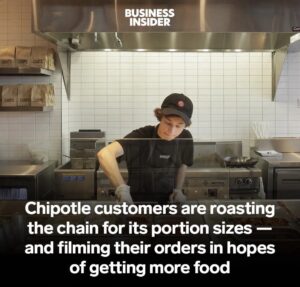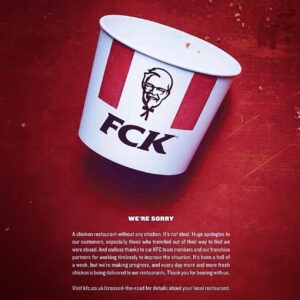The Joke’s on Whom? Navigating Humor in Crisis Management
By Ella Kate Baker
Introduction by Jonathan Bernstein
When Ella Baker from The University of Alabama’s College of Communication and Information Sciences contacted me about being interviewed for this Platform Magazine article, my first response to her was “Wow, what a great story angle!” I have been interviewed scores of times in my career, and written very extensively, but humor in crisis management has never been a topic! We appreciate having the magazine’s permission to reprint!
* * *
When a crisis hits, brands often scramble to craft the perfect response — professional, transparent and damage-controlling. But in certain scenarios, humor can be an unexpected yet effective tool. When used correctly, humor has the power to humanize a brand and relieve tension. However, if used poorly, it can backfire quickly.
So, how can brands strategically incorporate humor during a crisis?

Why humor works
American writer and humorist Mark Twain once said, “The human race has one really effective weapon, and that is laughter.” Humor diffuses tension quickly by lightening burdens and fostering connection. It allows brands to display empathy and build rapport with their audiences. Humor helps people “release anger and forgive sooner,” which explains why it can be so effective in crisis public relations.
“Humor can shift the conversation, moving it away from outrage or panic and toward a more constructive dialogue,” said Travis Claytor, president of TC Strategic Communications. “Just as important, humor can help humanize a brand, showing audiences that it’s not just a faceless entity but a group of real people who acknowledge the issue or crisis.”
There’s no doubt that crises are stressful on a brand. Jonathan Bernstein, founder of Bernstein Crisis Management, said, “There’s a lot of fear in various forms, including anxiety, automatically generated from our clients by whatever is happening, or it wouldn’t really be considered a crisis.” He explained that humor, if well-received, can serve as a “powerful tool to relieve stress” even for the clients themselves.
Humor brings humanity to the equation. It can be easy for a brand to defend itself during a crisis, but sometimes the better choice is to embrace the jokes and join the conversation.

“Whether a crisis is short-lived or goes on for weeks or months often depends on one’s ability to honestly and, sometimes light-heartedly, look at their own mistakes,” said Bernstein.
In the summer of 2024, Chipotle found itself facing backlash for ‘shrinking’ portion sizes, with fans voicing their frustrations on social media. Eventually, a “phone hack” went viral, showing if customers filmed themselves ordering, they would receive a larger portion. Making fun of the viral hack, the official TikTok page for Chipotle posted a video of customers holding their phones up at the restaurant. “POV u work at Chipotle rn,” they wrote over the video. With almost one million likes, fans were able to laugh it off.
Humor that worked
A standout example of humor used successfully came from Kentucky Fried Chicken. In February of 2018, KFC shut down over 800 restaurants in the U.K. because it ran out of the most important ingredient: chicken. People were outraged, and KFC’s lack of chicken became international news. According to the social media monitoring service Brandwatch, there were 53,000 mentions of KFC running out of chicken on Feb. 21 alone.

Unlike its chicken, KFC was “cooked.” With a crisis this big, KFC had to come up with a strategic and well-thought-out apology — and fast. With just one humorous ad, the fast-food chain and its agency, Mother, were able to turn the crisis into a marketing sensation. By rearranging the logo to “FCK,” KFC was able to embody a down-to-earth and honest apology, leaving viewers shocked. And to its advantage, they found it hilarious.
“A chicken restaurant without any chicken. It’s not ideal. Huge apologies to our customers, especially those who traveled out of their way to find we were closed,” said the KFC ad.
“We knew that the last thing they wanted to do at that moment was put out a robotic corporate message,” said Hermeti Balarin, executive creative director for Mother London, in an interview with Adweek. “We’ve seen so many bad ads and, in my humble opinion, they make the situations worse and luckily for us, the British have such a knack for a sense of humor. They use swearing in a very sophisticated way.”
In just a matter of days, the ad generated over 700 press articles and 200 social media mentions. Within three months, KFC’s earned media reach exceeded one billion — all thanks to one humorous apology.
Read the room
According to Claytor, humor “should only be used as a strategic tool not as a default response” in crises. A brand needs to analyze the characteristics of the crisis and the audience it’s addressing.
“In fact, more often than not, humor should be avoided during a crisis,” said Claytor. “But every now and then, a situation arises where humor can be a valuable tool.”
The line between effective humor and a PR disaster is thin. Humor can erase tension, but if it’s poorly executed, it can sound tone-deaf or even escalate the issue.
“Know the difference between humor and insult,” said Bernstein. “You have to test the messages. Some people have different senses of humor.”
Each crisis is unique, so brands must consider the stakes, their public persona and the timing of the execution. For brands known for their wit, a joke might work well. For others, it could seem out of place.
“You have to consider the level of tension and receptivity of the audience to humor,” said Bernstein. “It’s a very intuitive call.”
Whether a brand uses humor or not, the key is to acknowledge the crisis and show awareness. Humor should never be used to hide the truth or shift the blame onto consumers.
“However you want to insert humor, keep it focused inward and toward the brand,” said Claytor. “Never direct your humor toward any stakeholders.”
Being honest is crucial. Brands just have the freedom of how they want to execute that.
Ultimately, there’s a choice: to joke or not to joke. Regardless, read the audience, understand the situation and never let humor replace accountability. Laugh with the audience, never at them. Because when stakes are high, brands can either make the joke — or become one.
This post originally appeared on Platform Magazine on March 25, 2025
Guest blog by:
